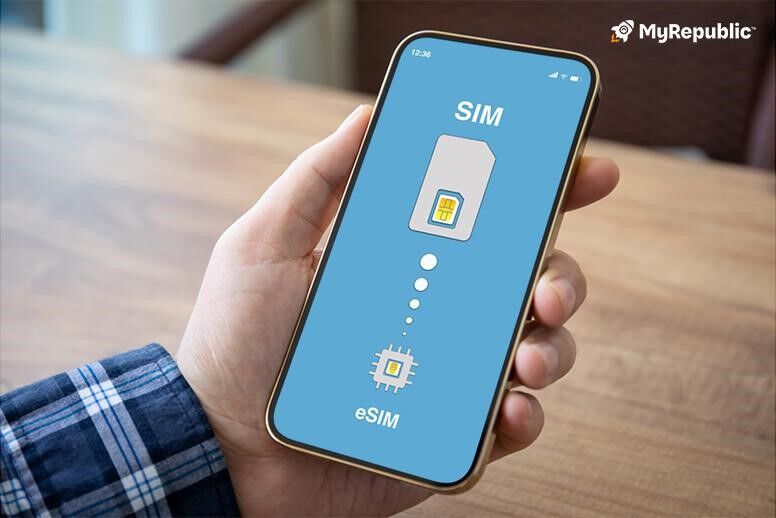
- MyRepublic Mobile
Embedded seamlessly into the hardware of our devices, eSIM cards are redefining the way we communicate in this digital age. These tiny, yet powerful, electronic SIM cards eliminate the need for physical counterparts, freeing up valuable space within devices for sleeker designs and enhanced efficiency. This shift marks a technological advancement that departs from the physical constraints of the past, offering customers a more flexible and convenient way of staying connected. In this blog, we delve into the technical architecture and robust security features of eSIMs that position them as game changers in the realm of mobile technology.
Technical Architecture of eSIM
1. Integration into Devices
eSIMs have become an intrinsic component of a device’s internal structure, contributing to a more compact design by replacing the physical SIM card slot. This paves the way for a more streamlined gadget that guarantees stable connectivity even while on the go.
Learn more: 3 Things to Note when Activating your eSIM
2. Functionality
Beneath their unassuming exterior, eSIMs reveal a sophisticated internal system that plays a pivotal role in optimising a device’s performance. They manage tasks such as data storage and authentication protocols, on top of facilitating uninterrupted communication with mobile networks. In Singapore, eSIMs exemplify the cutting edge of connectivity, providing individuals an advanced and efficient way to connect.
3. Multiple Carrier Profiles
The remarkable ability of eSIMs to store multiple carrier profiles transforms the way customers manage network connections. Unlike traditional SIM cards, which are tied to a single carrier, eSIMs allow people to download and store profiles from various carriers directly onto the embedded chip within their device. To switch networks, users can easily select the desired profile and activate the corresponding carrier’s services without physically swapping out SIM cards.
Security Features in eSIM Technology
1. Secure Authentication
Advanced authentication protocols in eSIM technology verify the identity of the device before granting access to a mobile network. This stringent procedure only authorises devices with reliable credentials, thwarting any illegal access attempts. This commitment to security also extends to eSIM data plans, helping to maintain a flexible connection while ensuring peace of mind in an interconnected world.
2. Data Encryption
In an age where information security is paramount, eSIMs employ state-of-the-art data encryption methods to safeguard customers’ data. When they communicate using an eSIM-enabled device, their information will be encrypted using complex algorithms that are unreadable to unauthorised parties. Even if intercepted, the data remains indecipherable without the proper decryption key.

3. Protection Against Cloning
Traditional SIM cards are susceptible to cloning, a common cyber threat prevalent today. It is a fraudulent practice involving the duplication of information from one SIM card to another, allowing unauthorised access to the mobile network associated with the original card. SIM card cloning can be used for malicious purposes, such as intercepting calls or messages or impersonating the legitimate user. Fortunately, eSIM cards are able to add a layer of protection to mobile identity by offering data encryption.
Optimising Connectivity for Consumers in Singapore
With the flexibility of eSIM data plans and the convenience of eSIM cards, consumers can now freely navigate the digital landscape and enjoy the benefits of advanced technology without compromise. Experience the limitless possibilities and unparalleled connectivity of eSIMs today.
Offering an extensive range of mobile telecommunication and internet services in Singapore, MyRepublic caters to both business and home needs with broadband subscriptions, eSIM data plans, and beyond. We take pride in our continuous recognition as the top Mobile Virtual Network Operator (MVNO) Provider in Singapore for four consecutive years, as voted by HardwareZone and HWM readers.




